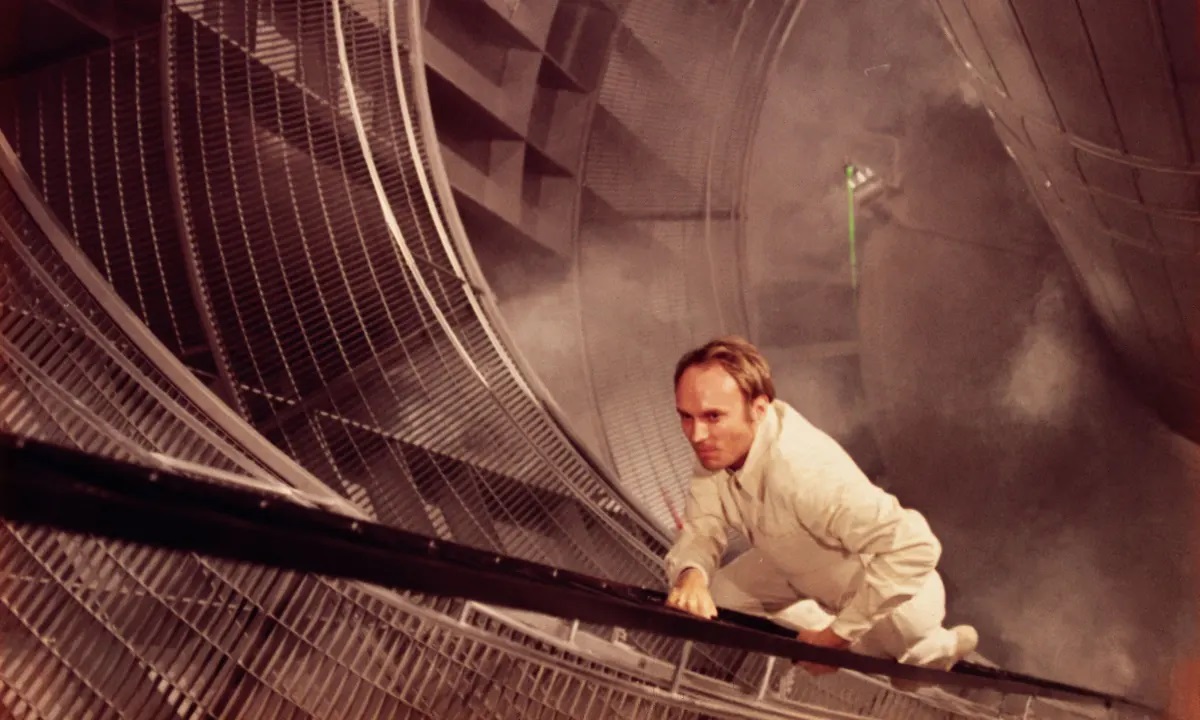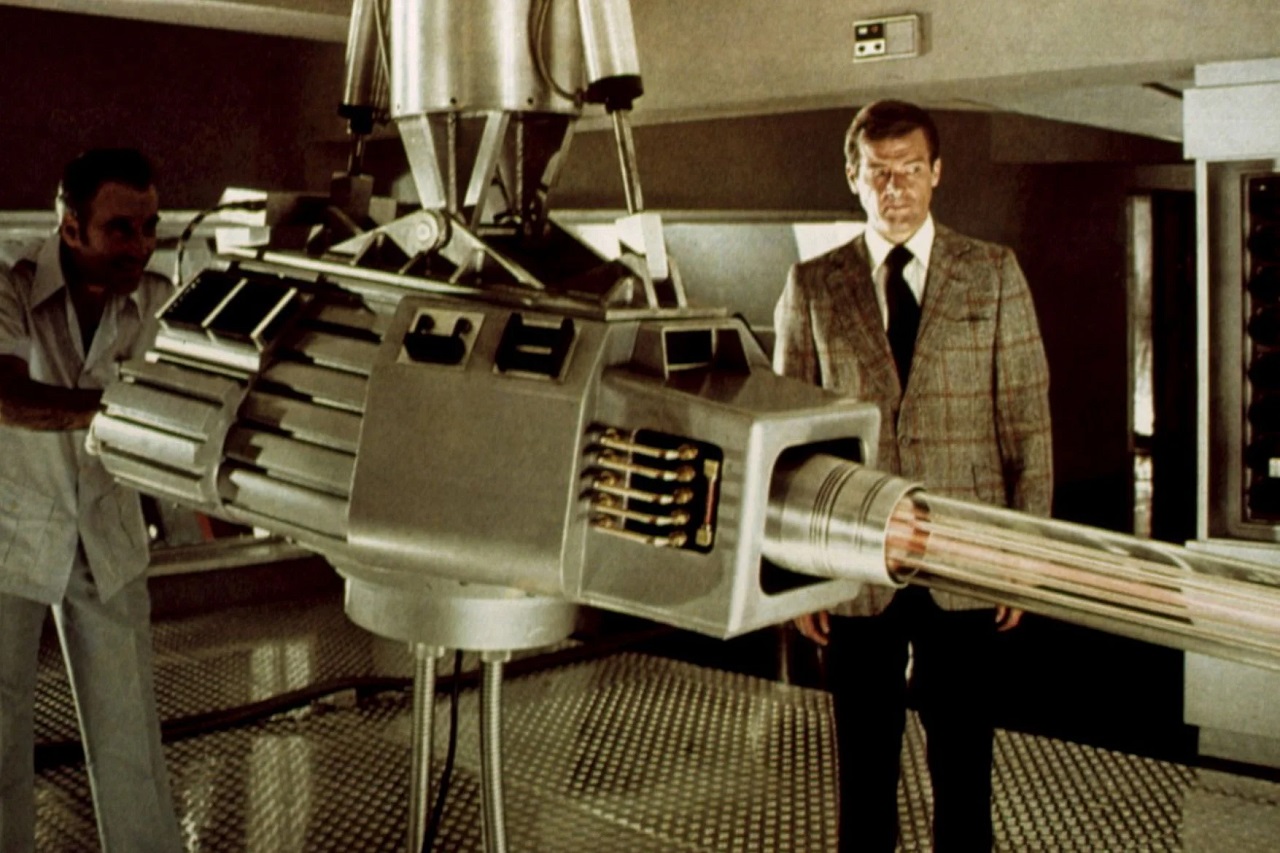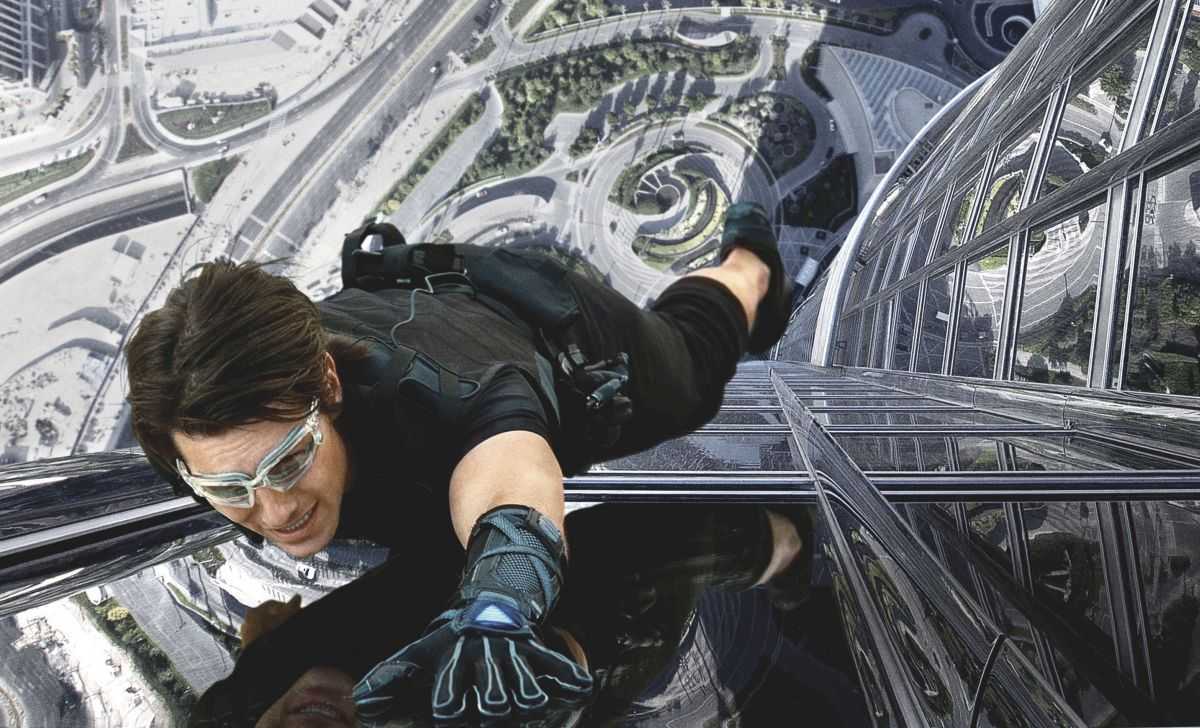The term ‘techno-thriller’ was coined in the 1980s to describe the spy thrillers of Tom Clancy that were dense with explanations about the workings of military equipment. The Oxford English Dictionary offers the following definition of a techno-thriller: “A novel or movie in which the excitement of the plot depends in large part upon the descriptions of computers, weapons, software, military vehicles, or other machines.” It is not known who coined the term.
For this site, techno-thriller is used in the broader sense defined by The Encyclopaedia of Science Fiction (1992). To quote the Encyclopaedia:
“A tale which, though it often makes use of SF devices, in fact occupies […] a mundane world … A typical techno-thriller plot evokes a technological scenario whose world-transforming implications are left unexamined or evaded, often through the use of plots in which a potential SF novum is reduced to a McGuffin. The SF element […] tends not to be presented in a sophisticated or analytic way … the only transformation of the world permitted is the End of the World, which almost never happens. Any novel in which future developments in science play a central role is not a techno-thriller at all: it is SF.”
We will also differ somewhat from the dictionary definition of ‘techno-thriller’. The usage that is applied to the works derived from Tom Clancy is of thrillers where much realistic-seeming detail is expended in making the SF element seem plausible. In filmed techno-thrillers, this is not necessarily the case where pages of technical detail can be reduced to a mere couple of lines of dialogue (if at all in some cases). Rather what we define a techno-thriller as is a work that counts as nominal science-fiction due to its use of advanced technology but where the science-fictional content is not conceptual but secondary to other aspects such as thriller or action.

In the works included here, the techno-thriller element is often little more than a McGuffin – Alfred Hitchcock’s term for an object (such as a device or a formula) that is sought by parties in order to drive the plot in a thriller. A perfect example might be the box of nuclear materials in Kiss Me Deadly (1955) or the vial of germ warfare agents in The Satan Bug (1965). A full-blown science-fiction film would be concerned with the possibilities or after-effects of the mass devastation these might offer; a techno-thriller is usually concerned with simply the chase to obtain/retrieve the items or individuals threatening to unleash them.
One writer whose work straddles both techno-thriller and science-fiction is Michael Crichton whose books come with a good deal of well-researched scientific detail, even accompanying charts and graphs. This density of detail is lost when it comes to their screen adaptations – the film adaptation that best captures the essence of Crichton is The Andromeda Strain (1971) about scientists working to find a cure to a virus brought back from space by a satellite. Crichton was a former doctor and the same technical detail is also present in his directorial outing Coma (1978) about a medical intern discovering an organ harvesting conspiracy at the hospital where she works.
There are some entire themes that can be considered techno-thriller material – almost all of the entries in Spy Films are included either because of the employment of fantastical gadgetry by the heroes, extravagant world domination schemes by the villains or the fight to acquire super-science weapons/formulas/devices/inventions.
Thrillers About Advanced Weaponry
The James Bond film The Man with the Golden Gun (1974) and the action film Light Blast (1985) feature advanced laser weapons. There have been several works based around satellite-based lasers and weapons with the James Bond films Diamonds Are Forever (1971) and Die Another Day (2002), The Six Million Dollar Man episode The Last of the Fourth of Julys (1974) and the action film Under Siege 2: Dark Territory (1995).
Elsewhere, Death Dimension (1978) concerns the weapons potential of a weather control device; the black comedy Deal of the Century (1983) features a robot plane; Eraser (1996) features the use of particle beam guns; and Freedom Strike (1998) concerns a computer chip that controls weaponry.

In the novel ideas department, Bells (1981) concerns a madman who can transmit explosions via telephone, while Kamikaze (1986) concerned a scientist who found a means to remotely turn tv cameras into weapons that kill people on live broadcasts. Live Wire (1992) concerns terrorists who employ a liquid that when drunken turns a person’s body into an explosive. Ignition (2001) concerns the attempts to use a space launch as a presidential assassination tool. Super Tanker (2011) dealt with the problems in disposing of an unstable antimatter weapon being carried aboard the title vessel.
In the theme Fims About Biowarfare, we also have a number of films that can be grouped as techno-thrillers and concern the theft, ransom and fight to prevent the release of deadly contaminants. Such plots can be seen in the likes of The Satan Bug (1965), Deadly Outbreak (1995), The Patriot (1998), Chill Factor (1999) and Mission: Impossible III (2006). Fast & Furious Presents: Hobbs & Shaw (2019) and the James Bond film No Time to Die (2021) feature programmable viruses.
Thrillers About Advanced Technology
Films dealing with advanced technology might include The Chairman (1969) where Gregory Peck pretends to defect to China with a radio transceiver implanted in his head so that he can spy; The Formula (1980) about the quest for a Nazi fuel substitute; Chain Reaction (1996) about the fight over a process that creates cheap energy from water; The Saint (1997) concerning the quest for a cold fusion formula; Charlie’s Angels (2019) that features a wireless energy device that has weapons potential; and Black Warrant (2022) about terrorists with a device that can bring down the power grid.
BrainWaves (1982) and Unforgettable (1996) both concern medical treatments whereby people inherit the memories of others. In both cases, the films lack interest in the details and ramifications of the process and after introducing it merely become thrillers about solving the murder of the dead person from whom the memories originate.
Nuclear Thrillers
Many of the entries in the theme Films About The Nuclear Threat are techno-thrillers in that they are thrillers and action films about the hijacking/regaining/preventing the usage of nuclear weaponry, as opposed to works that are concerned with what happens after it is detonated as in the films covered in the theme Films About Nuclear War.
Assorted nuclear hijacking/threat plots appear in various of the James Bond films including Goldfinger (1964), Thunderball (1965), The Spy Who Loved Me (1977), Never Say Never Again (1983), Octopussy (1983), A View to a Kill (1985) and The World is Not Enough (1999).
Other nuclear thrillers include Kiss Me Deadly (1955), Twilight’s Last Gleaming (1977), Wrong is Right (1982), Broken Arrow (1995), Diplomatic Siege (1998), The Sum of All Fears (2002) (which does detonate its bomb unlike all the other films in this section) and Mission: Impossible – Fallout (2018).
There is a small subset amongst these of films about individuals who build their own nuclear weapons such as the Japanese The Man Who Stole the Sun (1979) about a schoolteacher who builds a bomb and then begins blackmailing the government with increasingly more ridiculous demands. There was the US-made The Manhattan Project (1986) about a teenager who is hunted by government agencies after he builds a working atomic bomb as a school science project. A similar plot features in Spider-Man Strikes Back (1979).
Fallout (1998) features Russians hijacking the space station to hold the US to nuclear blackmail.
One notable example here would be The China Syndrome (1979), a thriller set around the realistic and technically plausible efforts to stop a nuclear reactor melting down, while The Chain Reaction (1980) is an action film based around a nuclear power plant leak. Edge of Darkness (1985) is an ecological thriller that ventures into the shadowy government conspiracies surrounding the nuclear power industry in Britain.
Computer Thrillers
These are a series of thrillers set around the internet and computer industry. These would include the likes of Sneakers (1992), Hackers (1995), The Net (1995) and Antitrust (2001). One of the best of these was the very first – WarGames (1983) concerning a teenage hacker who unwittingly hacks into a military computer and accidentally triggers a nuclear war alert thinking he is playing a videogame.
Eagle Eye (2008) and The Circle (2017) deal with fears of online surveillance, while Live Free or Die Hard (2007) has the USA is brought to its knees by a deadly hack attack. Sneakers, Fast & Furious 9 (2019), The 355 (2022), Heart of Stone (2023) and Operation Fortune: Ruse de Guerre (2023) concern the quest for programs that can break through all computer encryptions, while Mission: Impossible – Dead Reckoning Part One (2023) features this raised to the level of an artificially intelligent program that can enter any system and falsify information.
Also included here would be Crosstalk (1982), an Australian thriller about the development of an artificial intelligence, which only puts such a development at the behest of a murder mystery, and Access Code (1984), an early film about satellite surveillance. The best of these was A Murder at the End of the World (2023), a murder mystery set at a conference for the future that employs a range of advanced technical methods, including A.I., hacking and Virtual Reality, to solve the mystery.
Vehicle Fantasies
These concern the depiction of hi-tech vehicles outfitted with advanced technological devices. These include films such as
– Firefox (1982), a Clint Eastwood film about the theft of a hi-tech fighter plane from inside the Soviet Union, as well as copies of this such as Black Thunder (1998) and the Steven Seagal film Flight of Fury (2007)
– Blue Thunder (1983) about the appropriation of a hi-tech helicopter designed for law enforcement
– Black Moon Rising (1985) about the theft of an advanced car.
– Cyclone (1987) about a hi-tech motorcycle
– The Hunt for Red October (1990), a Tom Clancy adaptation about the pursuit of a radar-invisible Russian submarine
– Stealth (2005) about an artificially intelligent fighter plane gone rogue

A number of these, particularly on television, concern technologically advanced vehicles in the service of heroes who are engaged in routine crime and spy plots. Examples include the artificially intelligent car in Knight Rider (1982-6) or the hi-tech helicopters in tv’s Blue Thunder (1984) and Airwolf (1984-6) – see the film Airwolf (1985) – or the film Megaforce (1982) about a team of international peacekeepers with advanced vehicles.
Vehicle-based TV shows like Voyage to the Bottom of the Sea (1964-8), Stingray (1964-5) or Thunderbirds (1965-6) fall outside of the purview of this theme as they take place in future settings and feature characters dealing with more science-fictional threats.
One of the more interesting efforts that could be included here is Raise the Titanic (1980) about a massive engineering operation to raise the Titanic from the seabed.
A detailed discussion of vehicle-based films can be found in Fantastical Vehicles. Films about realistic depictions of space are dealt with under the theme Films About NASA and the Space Program.
Technologically Adept Heroes
Most of these entries can be placed under Films About Inventors, which frequently feature heroes going into action with homemade or improvised discoveries. There is however a small grouping of films and tv series about heroes who are highly adept in technical matters and the employment of these skills in thriller plots.
The most famous of these was the tv series MacGyver (1985-92) whose hero could adapt almost any device or employ scientific knowledge to jury-rig his way out of a situation. MacGyver featured assorted nuclear theft and biological contaminant plots but rarely ventured into anything more science-fictional than that. However, the short-lived copycat tv series Probe (1988), created by Isaac Asimov, featured a genius dealing with more challenging SF plots, including amok A.I.’s, murderous chimpanzees and elevators, and possible alien visitors. A similar tv series was The Wizard (1986-7).
The British tv series’ Doomwatch (1970-2) and Eleventh Hour (2005-6) and the US remake Eleventh Hour (2008-9) feature government agencies tackling a variety of environmental and scientific threats. The US tv series Whiz Kids (1983-4), the British tv series Bugs (1995-9) and the US tv series Level 9 (2000) feature groups fighting against technological (primarily computer) threats.

Also amusing is the film Real Genius (1985) about a group of nerds at university who employ a series of technologically elaborate hijinks, including a climax where they use a satellite laser to cook popcorn and explode the officious dean’s house.
Many of the films in the Spy Film category outfit feature regular protagonists with technologically advanced devices and gadgetry. Examples from the James Bond series might include the rocket backpack in Thunderball (1965), the invisible car in Die Another Day (2002) and nanotech tracking devices in Spectre (2015). The Mission: Impossible series regularly features lifelike facemasks and other assorted advanced technological devices with the most science-fictional of these being Mission: Impossible – Ghost Protocol (2011).
A subset of these could include tv’s The Six Million Dollar Man (1973-8) and The Bionic Woman (1976-8) that feature protagonists with cyborg enhancements but where the stories themselves are standard thriller plots in which the heroes are sent in to action, employing their superior abilities to win the day.
Recommendations
- The Andromeda Strain (1971)
- The China Syndrome (1979)
- Firefox (1982)
- Blue Thunder (1983)
- WarGames (1983)
- Edge of Darkness (1985)
- Probe (tv series, 1988)
- The Hunt for Red October (1990)
- Sneakers (1992)
- Mission: Impossible – Ghost Protocol (2011)
- Mission: Impossible – Dead Reckoning Part One (2023)
- A Murder at the End of the World (2023)
A full list of titles can be found here Techno-Thrillers

